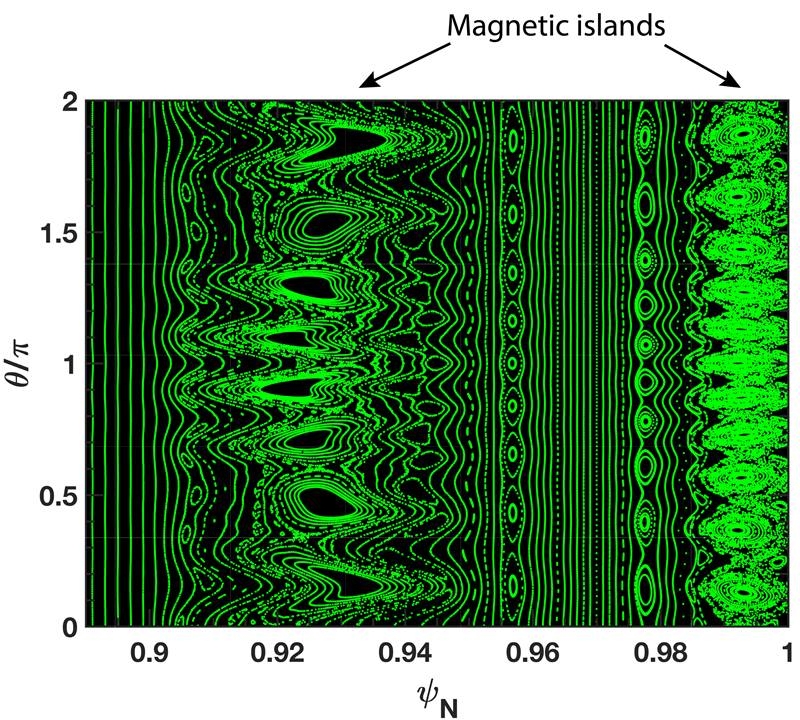The Science
ITER – the fusion reactor being built in the south of France – will use rippled magnetic fields to prevent bursts of heat and particles that can damage the walls of the reactor. Now, physicists working at the Princeton Plasma Physics Laboratory and the DIII-D national fusion facility better understand how controlled magnetic ripples outside the plasma can suppress these bursts. The researchers compared computer simulations of the DIII-D plasma with experimental measurements. The simulations correctly predicted the experimental conditions when the magnetic ripples form tiny magnetic bubbles just inside the plasma surface. They also showed how these bubbles release plasma pressure, like the valve in a pressure cooker. By releasing the pressure, they prevent bursts of heat and particles.
The Impact
In a device like ITER, large bursts of heat and particles from the plasma edge may damage or erode the reactor walls. Scientists knew that ripples in the magnetic fields can reduce the edge pressure and suppress these bursts in DIII-D and other fusion research facilities. However, for future reactors, scientists need to be able to accurately predict the conditions when these magnetic ripples will suppress such bursts. The simulations match key observations from DIII-D. They correctly predict the conditions for magnetic bubbles to form and the effect of those bubbles on the plasma pressure. The quantitative agreement of such models with experiments can help scientists better predict how to suppress these bursts in ITER, before the facility launches in 2025.
Summary
Edge-Localized-Modes (ELMs) are plasma instabilities that release intense bursts of heat and particles to the walls of a fusion reactor. Repeated bursts have the potential to accelerate wall erosion and degrade fusion performance. Relatively small helical magnetic fields (magnetic ripples) applied to the outside of the doughnut-shaped plasma can suppress ELMs. However, scientists still need a better understanding of this process to accurately predict ELM burst suppression in ITER. New nonlinear fluid (magnetohydrodynamic) simulations show that ELMs in the DIII-D tokamak are suppressed when the magnetic ripples applied to the outside of the plasma drive narrow magnetic bubbles (magnetic islands) just inside of the plasma. These islands form when the magnetic ripples halt the plasma rotation. These simulations correctly predicted when this braking takes place and how the resulting islands release just enough plasma heat and particles to prevent ELM bursts in the DIII-D tokamak. The researchers are now performing calculations to predict the conditions for suppressing ELM bursts in ITER using similar magnetic ripples applied to the outside of the future ITER plasma.
Funding
This research was supported by the Department of Energy (DOE), Office of Science, Office of Fusion Energy Sciences. It used the DIII-D National Fusion Facility and the National Energy Research Scientific Computing Center, which are both a DOE Office of Science user facilities.
Original post https://alertarticles.info
